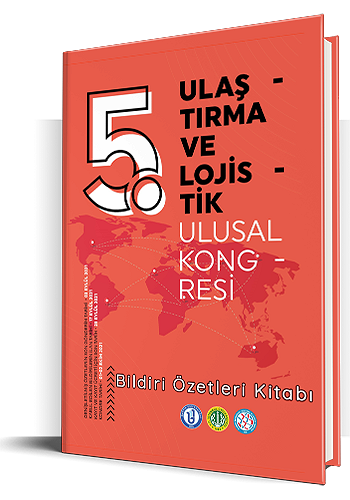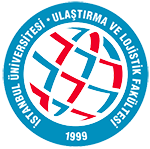Afet Lojistiğinde Performans Yönetimi
Neslihan Turguttopbaş
Doç. Dr., Atılım Üniversitesi, Ankara, Türkiye
Son yıllarda gerek ülkemizde ve gerekse dünyanın birçok noktasında afetler sıklıkla yaşanmaktadır. Tek başına Covid-19 salgını, bütün dünyaya afetler karşısında yaşanan acizliği ve ayakta kalabilmek için gerekli olan koordinasyonun gerekliliğini göstermiştir. Deprem, sel ve tsunami gibi afetlere göreceli olarak daha hazır olan sistemler, salgın durumunda özellikle tedarik zincirlerinde yaşanan kırılmalar sebebiyle uzun bir düzelme süreci sonrasında tekrar işlerlik kazanmıştır. Bu kapsamda, uluslararası kabul gören mevcut afet tanımlarının da tekrar daha kapsamlı bir şekilde revize edilmesi ihtiyacı doğmuştur.
Covid-19 öncesi dönemde afet, farklı uluslararası kuruluşlar tarafından farklı şekillerde tanımlanmıştır. Ancak, bu tanımlamalara değinmeden önce Eylül 2021 itibariyle Covid-19’un dünya genelinde yaklaşık 218 milyon kişiye bulaştığı ve 4,5 milyon kişiden fazla can kaybı olduğunu belirtmek yerinde olacaktır .
Bu çalışmanın amacı, son on yılda son derece sıklaşan doğal ve teknolojik afetlerin etkilerinin azaltılması amacıyla gerçekleştirilen lojistik faaliyetlerin performans değerlendirmesi için bir yaklaşım ortaya koymaktır. Önümüzdeki yıllarda gerek biyolojik ve gerekse diğer afetlerin sıklıkla yaşanabilmesi olasılığı çerçevesinde afet lojistik yönetimi tecrübelerinin ve performans değerlendirmesinin önümüzdeki yıllarda kıymetli bir alt yapı oluşturacağı düşünülmektedir. Bu kapsamda, çalışmanın ilk bölümünde afet lojistiği süreci ve yönetimi, literatür incelemesi kapsamında açıklanmıştır. İkinci bölümde afet lojistiği performans ölçütleri uluslararası bir işbirliği (WFP-TNT) çerçevesinde değerlendirilmiştir. Son bölümde ise, etkin afet lojistik yönetimi performans ölçütlerine ilişkin Türkiye’de afet lojistiği uygulamalarının performans ölçütleri kapsamında değerlendirilmesi amaçlanmaktadır.
Afet Yönetimi
Afet yönetimi afet gerçekleşmeden önce afetin gerçekleşmesinin önlenmesine ilişkin Hafifletme aşaması ile başlamaktadır. Bu aşamanın en iyi örneği olarak, sel felaketi olasılığına karşılık dere yatakları çevresinde bina yapılmaması verilebilir. Daha sonra ortamın ve bireylerin afetin gerçekleşmesi durumunda izleyecekleri süreci tanımlayan Hazırlık aşaması gelmektedir. İlk yardım eğitimleri ve erken uyarı sistemlerinin kullanılması bu aşamanın örnekleri arasındadır. Bu aşama, Mukabele olarak isimlendirilen üçüncü aşamaya hazır olmak için önemli bir süreçtir. Mukabele aşaması, afetin gerçekleşmesi durumunda etkilerinin en aza indirilmesi ve etkilenenlerin ivedilikle kurtarılması ve korunmasını sağlayacak tüm süreçleri içermektedir. Son aşama Rehabilitasyon süreci olarak isimlendirilebilir ve zarar görmüş olan altyapı ve konutlar ve aynı zamanda sosyal ve ekonomik hayatın yeniden yapılandırılmasına ilişkin faaliyetleri kapsamaktadır (Van Wassenhove, 2006).
Afet lojistiği, afet yönetiminin işlevsellik sağlayan önemli bir bileşenidir. Afet lojistiği, temel olarak afet yönetiminin Hazırlık ve Mukabele aşamaları ile ilgilidir. Özellikle Mukabele aşamasında yardımın etkilenenlere ulaştırılması ve bu faaliyetlerin performansının değerlendirmesi büyük önem taşımaktadır. Böylelikle benzer afetlerde gerek Hazırlık ve gerekse Mukabele süreçlerinde daha etkin bir sürecin işletilmesi maddi ve manevi kayıpların azaltılması mümkün olabilecektir.
2002 yılında World Food Programme (WFP) insani lojistik faaliyetlerini gerçekleştirmek amacıyla TNT şirketi ile ilk işbirliğini gerçekleştirmiştir. Bu işbirliği insani lojistik faaliyetlerindeki ilk özel sektör işbirliği olarak kabul edilmiş olup, TNT sahip olduğu taşımacılık optimizasyonu, depo yönetimi ve gümrük işlemlerine ilişkin uzmanlığını kullanarak birçok ülkedeki yardım faaliyetlerine destek vermiştir. A.T. Kearney (1984) tarafından belirlenen iş kriterlerinin afet lojistiği performans ölçümüne ilişkin olarak Ulaşım, Depolama, Satın alım, stoklama ve sipariş verimliliği olmak üzere 6 ana başlık altında düzenlenmiştir. Her bir kriterin olası etkilediği faktörler iş gücü, yerleşim üssü, malzeme, enerji, finansal yatırım ve işletme sermayesi olarak belirlenmiştir. Birçok yönetimsel fonksiyonda olduğu gibi bu sistemlerin her müdahale sonrası performansının değerlendirilmesi ise sonraki muhtemel afetlerde başarılı müdahalenin sağlanması açısından büyük önem arz etmektedir. AFAD yönetimin de gerek afet yönetim sisteminin, gerek ayrılmaz bir parçası olan afet lojistiğinin performans değerlendirmesini şekillendirmesi önem arz etmektedir. (Romero, 2007; TNT, 2007; Scott- Bowden, 2003; Hoffman, 2006).
KAYNAKÇA
Hoffman, W. (2006). DHL, U.N. set disaster pact. Traffic world, 17, Newark, United States.
EM-DAT (2007). EM-DAT; the ODFA/CRED international disaster database, 2006 disasters in numbers, http://www.em-dat.net, Université Catholique de Louvain, Brussels, Belgium.
Romero, N. (2007). Interview at TNT-WFP ‘Moving the world’ headquarters, 02-07-2007, Hoofddorp, The Netherlands.
Scott-Bowden, P. (2003). The world food programme: augmenting logistics. Forced migration review, vol. 18, 17 - 19.
Wassenhove, van, L.N. (2006). Blackett memorial lecture: Humanitarian aid logistics: supply chain management in high gear. Journal of operational research society, vol. 57, 475-489
Anahtar Kelimeler: Afet Yönetimi, Afet Lojistiği, Afet
Logistics Performance Management In Disasters
Recently, the disasters are happening frequently in Turkey and in all over the world. Covid-19 alone has showed to the world the weakness against the disasters and the requirement of the coordination in order to survive. The systems which are relatively ready to the disasters such as earthquake, flood and tsunami, were activated with longer betterment delays due to in the supply chains. In this framework, it is required to revise the internationally accepted definitions of the disasters. Before Covis-19, different international entities had different definitions of the disaster. Before defining the disaster, it is worthy to mention that the Covid-19 infected more than 218 million people and it caused the death of nearly 4,5 million as of September 2021. The purpose of this study is to submit an approach in relation with the performance evaluation of the disaster logistics activities realized to mitigate the effects of the natural and technological diseases which are realizing frequently in the last decade. Under the assumption that the biological and other disasters will frequently occur in near future, it is expected that disaster logistics management applications and the performance evaluation will constitute a valuable background. In the first section of the study, the disaster logistics process and management will be summarized literally. In the second section, the performance evaluation of the disaster logistics is elaborated in a framework of international cooperation (WFP-TNT). In the last section, the disaster logistics in Turkey will be analyzed with the performance criteria. Disaster Management Disaster management begins with Mitigation phase that is aimed to prevent the occurrence of the disaster. The best example of this phase the prohibition of building in valleys against the risk of flood. Thereafter, Preparation stage defines the process applied in the environment and people in case the disaster occurs. First aid education and early warning systems are examples of this phase. This is an important phase in order to be ready for Response phase. This phase involves all the processes required to mitigate the effects of the disaster and recover and protect the affected. In the last phase of Rehabilitation, the activities are for restructuring of the damaged infrastructure, buildings as well as social and economic life (Van Wassenhove, 2006). Disaster logistics is an important ingredient of the disaster management. It is mainly related with Preparedness and Response phases of the disaster management. Especially in the Response phase, the providing the aid to the affecteds and the measurement of the performance is very important. By that way, ,in similar disasters both Preparedness and Response phases will be effectively managed and the damage will be minimized. In 2002 World Food Programme (WFP) firstly collaborated with TNT in order to realize humanitarian logistic activities. This is the first private cooperation and the ability of TNT by using its abilities in the fields of Logistics optimization, warehouse management and custom issues supported the aid activities in many countries. The performance indicators of developed by A.T. Kearney (1984) transformed into logistics performance criteria under 5 topics of transportation, warehousing, procurement, inventory and ordering Each criteria is expected to effect the factors such as labor, center, equipment, energy, investment and working capital. As it is the case for other managerial functions, the performance evaluation of the systems is crucial in order to successfully manage the probable future disasters. AFAD should also figure out the performance evaluation of both disaster and disaster logistics activities.
Keywords: Disaster, Disaster Management, disaster logistics





